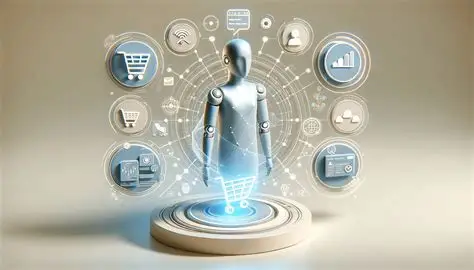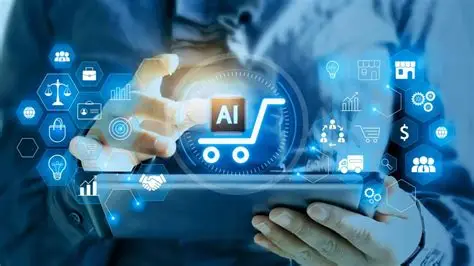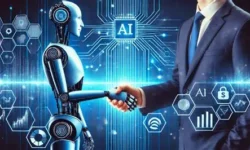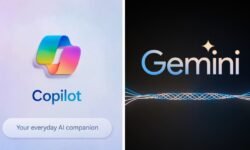AI Hyper-Personalization in 2025: Real-World Examples, Case Studies, and Future Trends
AI Hyper-Personalization in 2025: The New Standard for Customer Experience
In 2025, AI hyper-personalization is no longer a luxury—it’s a necessity. Businesses across industries are leveraging advanced AI, machine learning, and real-time data analytics to deliver one-to-one customer experiences at scale. According to McKinsey, fast-growing organizations gain 40% more revenue from hyper-personalization compared to slower-growing competitors:refs[3-20]. This guide explores the latest trends, real-world examples, and actionable insights to help you harness the power of AI-driven personalization.
From e-commerce to education, healthcare to finance, hyper-personalization is redefining how brands engage with their audiences. Let’s dive into the most impactful use cases and strategies for 2025.
What Is AI Hyper-Personalization?
Hyper-personalization goes beyond traditional segmentation. It uses real-time data, predictive analytics, and AI algorithms to tailor experiences to individual preferences, behaviors, and contexts. Unlike standard personalization, which groups customers into broad segments, hyper-personalization creates unique, dynamic interactions for each user:refs[5-22,24].
Key Components of Hyper-Personalization:
- Real-Time Data Processing: AI analyzes customer behavior as it happens, enabling instant adjustments to content, offers, and recommendations:refs[7-24].
- Predictive Analytics: Machine learning models forecast future needs based on past interactions:refs[9-21].
- Omnichannel Integration: Seamless personalization across web, mobile, email, and in-store experiences:refs[11-24].
- Contextual Relevance: Factors like location, device, time of day, and even emotional state are considered:refs[13-27].
Studies show that 71% of consumers expect personalized interactions, and 76% feel frustrated when brands fail to deliver:refs[15-28].
Real-World Examples and Case Studies of AI Hyper-Personalization in 2025
1. E-Commerce: Amazon and Shopify
Amazon and Shopify continue to lead in AI-driven personalization. Amazon’s recommendation engine, powered by deep learning, now accounts for 35% of its total sales. Shopify merchants using AI-powered tools see a 40% increase in average order value when leveraging hyper-personalized product suggestions:refs[17-29].
Example: Amazon’s AI analyzes browsing history, purchase behavior, and even cursor movements to suggest products in real time. Shopify’s AI tools enable merchants to create personalized landing pages and email campaigns that adapt to each visitor’s preferences:refs[19-29].

2. Retail: Nike By You and AI-Powered Design
Nike’s “Nike By You” platform allows customers to design custom sneakers using AI-powered tools. The system suggests designs based on past purchases, trending styles, and even fitness data from the Nike Run Club app. This approach has led to a 20% increase in customer retention and higher engagement rates:refs[21-25].
Key Insight: Nike combines AI with augmented reality (AR) to let users visualize their custom designs in real time, enhancing the shopping experience:refs[23-25].
3. Education: Khan Academy and Duolingo
Khan Academy and Duolingo use AI to personalize learning paths for millions of students. Khan Academy’s adaptive exercises adjust difficulty based on performance, while Duolingo’s AI tailors language lessons to individual learning styles. These platforms report 30% higher completion rates compared to traditional methods:refs[25-18,25].
Example: Khan Academy’s AI identifies knowledge gaps and recommends targeted exercises, while Duolingo’s AI adjusts lesson pacing to optimize retention:refs[27-18].
4. CRM: AI-Powered Customer Relationship Management
Companies like Salesforce and HubSpot now integrate AI to deliver hyper-personalized CRM experiences. For instance, Autobound.ai helped a SaaS company achieve a 15% increase in conversion rates by using AI to analyze firmographic, behavioral, and demographic data:refs[29-28].
Key Insight: AI-driven CRM systems can predict churn risk, recommend upsell opportunities, and automate personalized follow-ups, making sales teams more efficient:refs[31-28].
5. Marketing: Hyper-Personalized Email Campaigns
Hyper-personalized emails generate six times more transactions than generic ones. Brands like Cosabella saw a 60% increase in sales by using AI to craft ultra-personalized email sequences with dynamic content:refs[33-10,14].
Example: Cosabella’s AI analyzed customer data to send tailored product recommendations, resulting in higher open rates and conversions:refs[35-14].
6. Beauty and Fashion: Amorepacific’s AI Beauty Counselor
Amorepacific’s AI Beauty Counselor (AIBC) app uses generative AI to provide hyper-personalized skincare advice based on past purchases, skin type, and environmental factors. The app has driven a 25% increase in repeat purchases:refs[37-23].
Key Insight: The AIBC app integrates with Amorepacific’s e-commerce platform, creating a seamless omnichannel experience:refs[39-23].
Industry Trends and Statistics for 2025
Challenges and Ethical Considerations
While hyper-personalization offers immense benefits, it also raises concerns:
1. Data Privacy
Collecting and analyzing vast amounts of personal data requires strict compliance with regulations like GDPR and CCPA. Brands must prioritize transparency and consent:refs[43-12].
2. Algorithm Bias
AI models can inadvertently reinforce biases if not properly trained. Companies must audit their algorithms for fairness and inclusivity:refs[45-27].
3. Over-Personalization
Too much personalization can feel intrusive. Striking the right balance between relevance and privacy is crucial:refs[47-11].
How to Implement AI Hyper-Personalization in 2025
Step 1: Invest in Data Infrastructure
Build a robust data pipeline to collect, store, and process real-time customer data. Tools like Snowflake, Google BigQuery, and AWS Redshift are essential:refs[49-12].
Step 2: Choose the Right AI Tools
Leverage platforms like IBM Watson, Salesforce Einstein, or Adobe Target for AI-driven personalization:refs[51-22,24].
Step 3: Start Small and Scale
Pilot hyper-personalization in one channel (e.g., email or product recommendations) before expanding to other touchpoints:refs[53-20].
Step 4: Measure and Optimize
Track KPIs like conversion rates, customer lifetime value (CLV), and engagement metrics to refine your strategy:refs[55-21].
The Future of AI Hyper-Personalization
By 2026, hyper-personalization will evolve further with advancements in:
- Emotion AI: Systems that detect and respond to customer emotions in real time:refs[57-27].
- Voice and Visual Search: AI-powered assistants will deliver personalized results based on voice queries and images:refs[59-24].
- Metaverse Integration: Brands will use AI to create personalized virtual experiences:refs[61-26].
Experts predict that customer experience (CX) will surpass price and product as the key driver of brand loyalty by 2026:refs[63-28].




